A film on Kashmir reignites old wounds
Beyond the number of deaths and whether to define the Pandits’ barbaric displacement as genocide, this is a chapter of contemporary Indian history that has received woefully inadequate media and scholarly attention, writes Mayank Chhaya for South Asia Monitor

There has been a trend on the side of the liberal and left-liberal opinion-makers in response to the film ‘The Kashmir Files’ that would suggest that the claims of genocide are exaggerated since the number of deaths does not justify that characterization. In the process of quibbling over the definition of genocide and the number of Kashmiri Pandits who were killed in the early 1990s, a response like that tends to paper over the essential human tragedy of the Pandits’ barbaric displacement.
This liberal/left-liberal skepticism will only fuel and reinforce the lunatic right-wing narrative that they do not care when it comes to the Hindu community.
Whether the number of deaths is commensurate with the act of being violently thrown out of the Kashmir Valley is not the most important point. The simple point is that the exodus happened and happened as part of a sinister design. I was there to report it firsthand in the early 1990s as part of my Kashmir reporting. I used to visit the valley fairly regularly for the New York-based newsweekly India Abroad and the then India Abroad News Service (IANS). I was witness to the animus against the Pandits on the ground as well as some strong support and genuine affection among the Muslims for the Pandits. Such tragedies are never black and white.
Targeting Pandits
On balance though, the Kashmiri Pandits were systematically targeted by violently misanthropic groups even as the pushback from the local population not aligned with these groups was practically non-existent. Whether that acquiescence constituted complicity is a different question and needs a more detailed examination.
The cinematic merit or otherwise and thematic accuracy of the Bollywood director Vivek Agnihotri’s much-discussed ‘The Kashmir Files’ are not germane to the issue of whether the Pandit community’s tragedy had the characteristics of a genocide. The term has often been loosely used but under the United Nations Genocide Convention, which came into being in 1948 and into effect in 1951, genocide has been specifically defined. The term was coined by a Jewish-Polish lawyer named Raphael Lemkin by combining the Greek word Genos, meaning race or tribe, and cide meaning killing.
"Any of the following acts committed with the intent to destroy, in whole or in part, a national, ethnic, racial or religious group, as such":
• Killing members of the group
• Causing serious bodily or mental harm to members of the group
• Deliberately inflicting on the group conditions of life calculated to bring about its physical destruction in whole or in part
• Imposing measures intended to prevent births within the group
• Forcibly transferring children of the group to another group”
Genocide?
Going strictly by those standards, what happened to the Pandits probably meets the first three of the five conditions in some measure. That is not anything but still not genocide as defined in the convention. What we call it is irrelevant as long as we recognize the massive human tragedy therein.
The overarching point is that it would be a serious disservice to the Kashmir Pandits to diminish their terrible plight via a statistical sleight of hand. In the last three decades, successive Indian governments have chosen not to accord it the seriousness it deserves. This apathy has cut across party lines, including under the current Bharatiya Janata Party (BJP), a party that many Pandits believe would extend unqualified support to their cause. The track record of the party’s two governments, once under the now late Prime Minister Atal Bihari Vajpayee (1998-2004) and currently under Prime Minister Narendra Modi since 2014, has not been particularly inspiring to the community.
Quite unusually though, Modi offered some sanguine support to the film and its makers even while not generally talking about the community during his now seven-year-long tenure. He said during a speech that there was a campaign to “discredit” the film as those who frequently raised the flag of freedom of expression otherwise were rattled by it.
Kashmir Files
If Kashmiri Pandits have so emotionally supported Agnihotri’s film, it is because they feel represented albeit with some clear filmic license. Even in the early nineties when I wrote about their plight, I experienced a surge of comparable emotions from members of the community. Remember I was doing the story practically in real-time while the movie has a distance of some three decades.
The film brings back several memories of my having reported the harrowing plight of the Kashmiri Pandits from Anantnag, Srinagar, Jammu and New Delhi. I was among the first journalists to extensively report on the crisis in my capacity as the South Asia chief correspondent of India Abroad and the IANS.
On one of my many visits to Kashmir in the early 1990s, it was probably 1991, I began a report with this lead, “I flew over the mountains of ifs and landed into the valley of buts.” Three decades hence not much seems to have changed. It is still ifs and buts and a whole lot of tensions in between.
When I first landed in Srinagar and came out of the airport looking for a cab, a young man, Ghulam, came to me and said, “Aap to Hindustan se aaye hain na?” (You have come from India?”) That one question summed up the detachment, disengagement and alienation that Kashmiri Muslims in the Valley have displayed for decades. I was about to correct him and say “Which country are you in?" but I did not in order to dwell into that mindset. Quite fortuitously, Ghulam himself offered the explanation about why he was treating India as a separate country. “Hum Kashmiri azad hain. Yeh hamara mulk hai,” (We Kahsmiris are independent and this is our land)” he said. I found that absurd and pointed out to him the irony of calling himself “azad” even while retaining the name “Ghulam”, which literally means a slave or, more broadly, a subject.
Separatist mindset
My introduction to the plight of the Kashmiri Pandits did not take much time. Just as I was driving to my hotel, we went past several homes that seemed strangely abandoned. I asked Ghulam about them. “Yeh Panditon ke ghar hain. Woh chhod ke gaye hain” (Those belong to the Pandits. They have left them.),” he said in a tone remarkably bereft of any emotion.
I probed him a bit more, “Kyun chale gaye?” (Why did they leave?)”
He looked at me in his mirror and said: “Bhagaa diya hai unko jihadiyon ne.” (The Jihadis have driven them away.)
That set me on to what turned out to be a detailed cover story about the Kashmir Pandits’ exodus from the Valley in the face of often unspeakable cruelty and killings. During my subsequent visits to the state, I went to Anantnag as part of my story. When I told my taxi driver, whose name escapes me now, that I wanted to go to Anantnag, he corrected me to say “Islamabad.” Intrigued by that I asked him why he was calling it Islamabad, he said: “Hamare liye to wahi naam hai.” (That’s the name for us.)
These little nuggets, first from Ghulam and then from the second taxi driver, as well several other interviews in Srinagar began to tell me a story about some deep-rooted animus between the Pandits and Hindus that was clearly fraught with the problems that exploded soon afterward. Sustained campaigns against their lives and property forced the Pandits to flee the land they had called home with great cultural pride for centuries and more.
Anti-India sentiments
In a sense, Anantnag was a hotbed of Pakistan-sponsored jihadi insurgency. The young men of the town were not subtle in their hatred. But for my profession, they would not have indulged me. In me they saw a chance to tell their stories which were often thinly disguised talking points handed to them from across the border. Occasionally though one would come across a glimpse into why the whole area was so thick with anti-India sentiments. I was taken to what looked like a bombed-out shelter by about half a dozen young men. One of them asked me to guess what the building was before it was destroyed. I said I couldn’t. He said it was once a school, the only school in the area.
I asked him who bombed it. He claimed it was the Indian Army. As it turned out some heavily armed insurgents had been hiding there. A fierce gun battle between them and the army led to the structure being bombed. Later, an Indian Army official in the area told me that it was the insurgents themselves who had destroyed it.
I asked those young men about the Pandits and why they had to flee from their own homes. Four of them did not say anything. One of them said quite plainly: “Yeh Kashmiri Muslamanon ka hai.” (Kashmir belongs to Kashmiri Muslims). Only one of them had a nuanced response. “Unko chhod ke nahi jana chahiye tha. Woh hamare bhai hain.” (They should not have left. They were like family to us.) The others were particularly displeased with the response but chose not reprimand him in my presence.
Pandits endure
During a visit to a makeshift refugee camp for the dislodged Pandits in Jammu, despite the obvious challenges of refugee life, I discovered many Pandit families engaging their children in regular education. An elderly gentleman who introduced himself by his last name Kaul and who was reading a book about Kashmir’s history sitting inside his tent, told me: “Learning has historically been the most important part of Kashmiri Pandits’ lives. There is a reason why we are call Pandits. Our young Muslim compatriots don’t believe in learning. They prefer coercion and violence.”
Beyond the number of deaths and whether to define the Pandits’ barbaric displacement as genocide, this is a chapter of contemporary Indian history that has received woefully inadequate media and scholarly attention. In a vacuum, it should not be surprising that an apparently in-your-face movie is gaining much attention.
(The writer is a Chicago-based journalist, writer and filmmaker. Views are personal. He can be contacted mcsix@outlook.com)




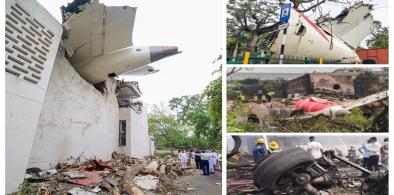
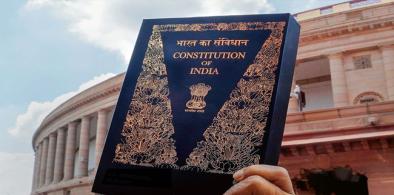
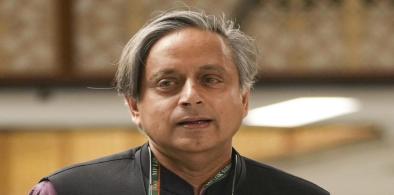


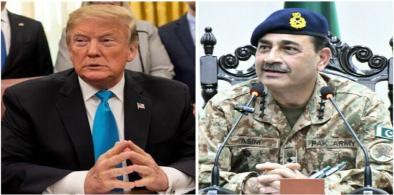
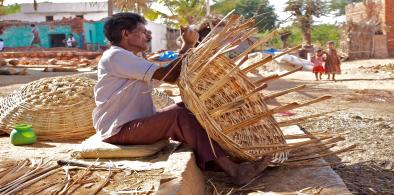
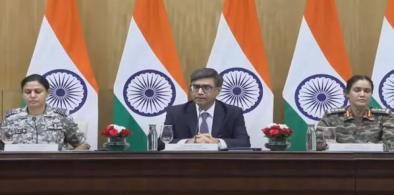
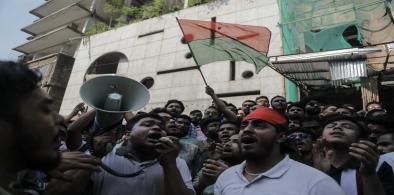




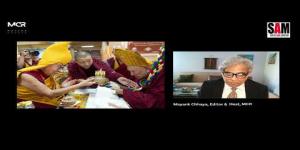


Post a Comment